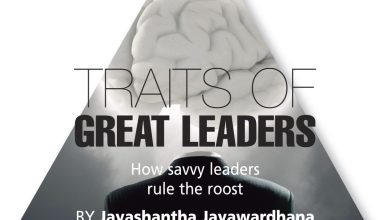EXPERIENTIAL MARKETING
CREATING ENDURING VALUE
Products and services need to have a lasting impact – Dr. Muneer Muhamed

The buzzword ‘experiential marketing’ has been around for a while – ever since Bernd Schmitt wrote his book by the same name way back in 1999. However, the term has its origin in the book titled ‘The Experience Economy’ by Joseph Pine and James Gilmore. The proposition is that customers, employees or users want more than the basic product or service being offered.
They mooted an entertaining, enjoyable and rewarding experience during the purchasing process. And an industry of sorts is still evolving around improving the buying experience under various permutations and combinations.
Going by the experiences of many online customers, this industry isn’t really succeeding in improving its user experience. From digital banking and mobile pay apps, to online groceries and fashion, there are several failed or miserable stories on what not to do if the aim is to provide a better customer experience.
Obviously, most marketers would benefit from designing and delivering a good experience for their customers. But they seem to frequently overlook a critical element, which is the enduring value of service experiences.
Interestingly, only a few service experiences leave a lasting impression on buyers – but when they do, they have a great impact on the overall customer experience.
University students may recall the parties and sports events they attended, but they’re also likely to remember the lasting camaraderie, companionship and career networking as being the enduring benefits of that graduation experience.
An investment advisory firm may decide to make the service experience more enjoyable with a luxurious ambience, refreshments and friendly conversations. However, most clients desire safety, healthy returns, risk avoidance and peace of mind regarding their financial security rather than the physical experience itself.
Hospitals may try to make the admission process, stay and medical treatment as painless as possible, but the outcomes of such experiences – such as surviving a heart attack, the safe birth of a healthy baby and so on – will have a greater impact on patient loyalty.
The concept of enduring value seems to have been underrated and ignored in most marketing discussions, perhaps because marketing tends to overemphasise the present.
Marketers look for customer satisfaction with transactions as opposed to committing to relationships. They want to know how satisfied customers are after or during a service experience to respond immediately to dissatisfaction and check patterns as soon as they’re detected.
When customer attitudes are measured during or immediately following a service experience and not a point at which lasting value can be perceived, the interviewees will automatically discuss only the experience itself. They have no way of knowing what lasting impact or relationship the service provider will have on their lives.
Marketers can only gauge the importance of enduring value by deliberately focussing on lasting impact, and measuring the awareness and appreciation of that impact, and the extent to which it is attributed to the service provider.
Businesses such as those in education, training, investment advisory, healthcare and insurance that can have a significant impact of enduring value on customers’ lives – and wish to exploit this value through experiential marketing – must modify their traditional marketing function and perhaps add a few new ones.
Market researchers should observe customers to find out what has a lasting impact so they can learn what clients desire, what they gain and how much credit they attribute to service providers.
Such information will provide insights into the way a company delivers its services, how it can modify these services to improve the lasting impact and include elements of enduring value through advertising. Use real cases, testimonials and word of mouth, to make the information more powerful and credible.
Marketers should track the impact of campaigns by measuring the levels of awareness, appreciation and attribution in the minds of customers. Go beyond mere monitoring and promote each idea by reminding customers of how much they’ve gained. Marketers can use a tracking system for this; and when customers are asked about lasting impact, their answers will serve to heighten awareness.
Nudge clients to gauge the difference to their lives by asking the right questions or helping them calculate the impact in measurable terms. And in some cases, customers may track the impact on their own by maintaining a log or chart of progress or failure of the product or service on offer.
Test different ways to remind customers about the enduring value they’ve gained and measure what it means to the overall strategy.
Undoubtedly, the entire process demands that the service experience is essential to marketing and delivery but that’s only half the equation because enduring value is also a critical goal.
Enduring value is also a critical goal





